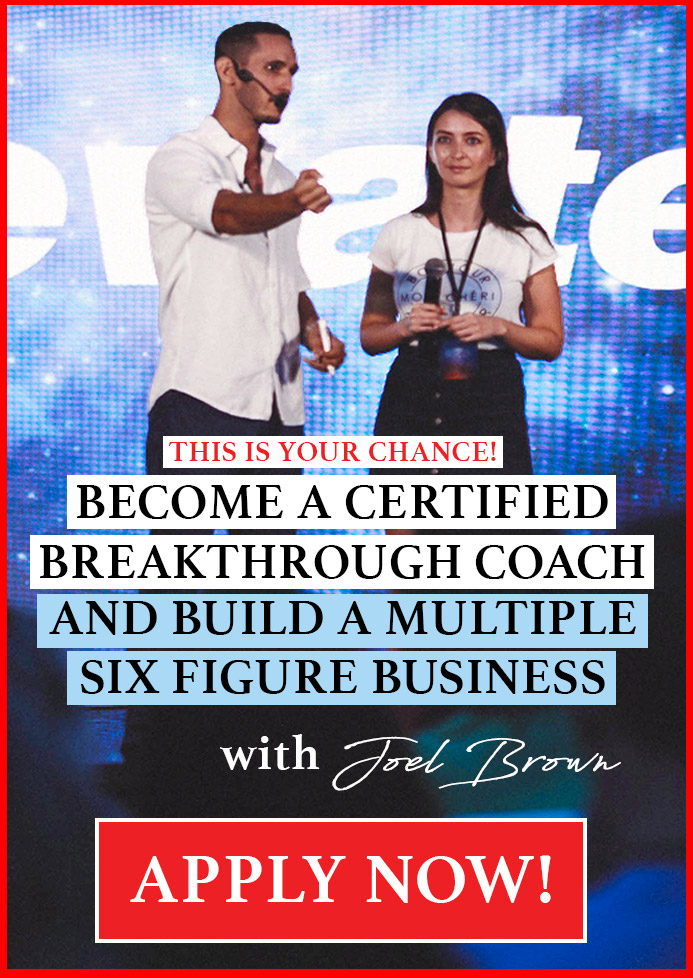Success Advice
3 Mindset Tactics You Can Borrow From Extreme Sports Athletes

Extreme sports athletes are known to have nerves of steel. From daring moves among the rocks to 2 and 3 flips and rotations on rock hard snow, professional skiers face what seem to be insurmountable obstacles on a daily basis. They are among a small group of elite performing humans who face danger and death on the regular. Having interviewed 30+ professional skiers and their coaches over the last 3 years, I’ve come to find some common threads among their adaptations to danger and how powerful their minds are.
No matter what kind of success you are pursuing, mindset is going to be a crucial factor in it. Sometimes the normal “routine” mindset strategies don’t work for certain people. I’m not someone who gets into a regular meditation routine quickly but for some people that’s their little slice of heaven. I’ve had to look at what creates success for the “normal” people out there and adapt my own from it.
Here you’ll find 3 strategies adopted from interviewing over 30+ professional athletes and their coaches that will help you create a mindset habit that works but is “different” than what most people would recommend.
1. Moving Meditation
Many mindset coaches will first steer towards the observation of the mind. Most often this is done through drawing attention to the breath, which is a proven method of directed focus that helps the practitioner gain perspective on their thoughts. Oftentimes people will report a greater peace and ease because of a feeling of non-attachment to things that might have previously caused disruption.
As I stated earlier, meditation is a hard habit for me to form no matter how hard I try. So I have to adapt, and I’ve noticed that many of these athletes do the same. Meditation is not just sitting with your legs crossed trying to empty your mind. Meditation is about channeling your focus on one thing and returning your focus to that one thing as it drifts.
Our attention is designed to drift and to look for stimulation when we’re awake. Any type of meditation helps us practice refining the skill of directing our attention to one place. Since attention is a flexible and directable bandwidth that gets pulled on through our days by relationships, daily routines, work… you name it, there are people who are in competition for our attention, so we must refine our focus.
Most of these athletes describe themselves doing a type of meditation, but oftentimes I heard that they struggled to be sitting still while practicing meditation. They leveraged moving meditation to help channel their focus and appease their hyperactive bodies. We’re designed to move and yet we find ourselves sitting in office chairs for 8+ hours a day just to hop in a car and sit on the way home.
By combining movement and meditation, these athletes are able to do two powerful things for their mindset;
- Build the muscle of focus
- Create momentum from their routines
For many athletes and entrepreneurs, walking and yoga become super powerful forms of moving meditation that allow for decompression, channeled focus and allow them to build their routines around their personal needs. If you’re struggling to see any results with the standard mindfulness and meditation strategies, try what extreme sports athletes do, combine it with movement. Not everyone is the same, allow yourself to adapt the standard strategies to make them work for you.
2. Directed Curiosity/Peripheral Logic
Sometimes we need peripheral thinking. Extreme sports athletes demonstrate an exceptional form of peripheral logic and directed curiosity. What is ‘directed curiosity’ you may ask? Directed curiosity is an extension skill that gets developed as you passionately dive into subject matter. One example would be that skiers became obsessed with different ways to rotate in the air over obstacles. This is an example of directed attention and curiosity at a single obstacle and it has created an almost unlimited variation of ways to perform tricks off of the obstacles.
As skiers hit failure, they receive a lot of negative feedback in the form of pain and yet they let their directed curiosity bring them back to the obstacle in order to figure out how to achieve success. That moment can be celebrated by anyone who is in the hard work of achieving a big goal.
It’s the act of resilience made easier by curiosity. We don’t always see success immediately. Directed curiosity can help you return your focus to the subject matter and ask questions like;
- What happened?
- Why did it go wrong?
- What could have allowed for it to go right?
These questions that are asked consciously and subconsciously from extreme sports athletes should be a lesson in the achievement of success and resilience. Don’t give up, ask how it can be different and better.
Ok, now what about peripheral logic? Peripheral logic is just an extension of directed curiosity. In terms of the experience of a skier, it’s the answer to the question of, ‘what do I have to do to make this successful?’
Oftentimes the answer to this question is right next to where we’re looking. Sometimes we have to approach an obstacle from a completely different angle but all too often a small tweak will change the trajectory and success rate in a big way. Think about these as “mini-pivots,” the small changes in orientation to your obstacle that allow you a new and fresh perspective and trajectory.
“You must expect great things of yourself before you can do them.” – Michael Jordan
3. Focused Unattachment
Mindfulness is a great way to create space for yourself, but what happens when you absolutely cannot get past the attached feeling you have? For extreme sports athletes, this manifests in their risk-taking. How an extreme sports athlete deals with fear is different for every athlete but each tends to have some form of focused unattachment.
Their ability to bypass their autonomic nervous system and create a channel for focusing on the task at hand is second to none. It’s the ultimate form of mindfulness and meditation, and it comes from this focused unattachment.
I interviewed x-games medalists, Julian Carr who’s known for 100+ foot front flips off of massive cliffs. He talked in that interview about complete surrender to the mountain and the forces. For him, he’s got to be completely relaxed or the impact could actually cause him a lot more harm. His focused unattachment allows his safety and the ability to continue to perform jumps like he does season after season without incident.
Focused unattachment comes when you know you’ve done everything to prepare. For Julian, he’s looked at the landing of every jump he sees. He makes sure the snow conditions are exactly what they need to be. He’ll even look at the slope in the summers to identify where the rocks might be lurking under the snow.
He has worked his way up and has built his confidence over time through repeated systems. He’s been skiing his whole life and he understands his limitations. So at the moment he can completely release from the outcome and let it come to him.
For most of us, it’s hard to trust even when we’re fully prepared. Julian doesn’t land every jump, but he’s safe. When attempting anything great and we’ve focused enough on the preparation, we should be able to have a focused unattachment about the end goal. We know what we’re going for, we know what we want and we show up to give it our all. Whatever happens after that is out of our control. When you can find peace at that moment, you’ll find your best performances.
Success is attainable if we’re willing to adapt ourselves to the world around us and the world around us to our needs and wants. Leverage these 3 strategies to create success for yourself by modeling what extreme sports athletes do. It’s an extreme world out there and there’s a lot to be learned by those that overcome it on a daily basis.
Explode Your Social Media
Want More Views? Master These 6 YouTube Growth Tactics
Getting a strong start or feeling stagnant are two completely different problems, but they both need momentum, viewer engagement, and growth to fix them.

Strategic planning combined with unwavering dedication allows you to rise above the chaos of YouTube—luck won’t get you anywhere. (more…)
Change Your Mindset
The Leadership Skill Nobody Talks About (But Changes Everything)
Curiosity often takes a back seat to certainty and gets labeled as a soft skill, which makes it sound obvious and easy

Most of us, when faced with challenges, instinctively seek certainty and answers. In turn, our ego steps in and prompts us to defend our views, double down, or perhaps disengage. (more…)
Success Advice
Breaking the Bias: How Females Can Thrive In The Workplace in 2025
The good news is that some steps can also be taken by female business leaders who are looking to voice and fight these issues, take charge of their careers, and grow their business or influence in the industry.

Over the past 100-odd years, women have played a critical role in the ever-changing labor force. (more…)
Success Advice
Success Isn’t Sexy: 5 Daily Habits That Actually Work
You’ll need to master the unsexy routines that build momentum in the background

There’s a gritty, unfiltered side of success that rarely makes it to our timelines or TED Talks. It’s not drenched in neon lights, wrapped in viral quotes, or toasted with champagne selfies. It’s quiet. It’s routine. And honestly? It’s often boring. (more…)
-

 Personal Development4 weeks ago
Personal Development4 weeks agoWant to Change the World? Start by Sharing Your Knowledge
-

 Success Advice3 weeks ago
Success Advice3 weeks agoThe One Mindset Shift That Made Me Irreplaceable At Work
-

 Scale Your Business3 weeks ago
Scale Your Business3 weeks agoWhy Smart Entrepreneurs Never Skip This One Business Expense
-

 Success Advice2 weeks ago
Success Advice2 weeks agoHow Playing by the Rules Became the Smartest Business Strategy
-

 Did You Know2 weeks ago
Did You Know2 weeks ago7 Surprising Life Lessons Video Games Taught Me That School Never Did
-

 Success Advice2 weeks ago
Success Advice2 weeks agoHow to Build Trust, Kill Micromanagement, and Lead a Team That Thrives
-

 Scale Your Business2 weeks ago
Scale Your Business2 weeks agoHow to Build a Workplace People Actually Want to Show Up To
-

 Success Advice1 week ago
Success Advice1 week agoSuccess Isn’t Sexy: 5 Daily Habits That Actually Work





























